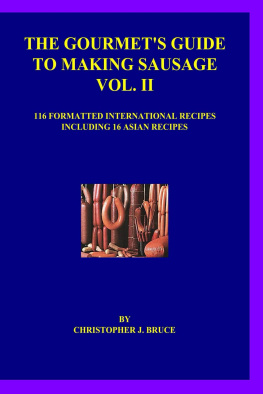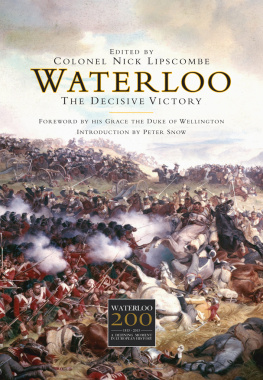Reviews for 'The Last Crusade':
Selected as one of the 'season's leading titles'
History Today, May 2002
One of this year's selection of 'top history books'
BBC History Books of the Year Supplement, November 2002
'A well-written chronicle which draws judiciously on official and private sources and includes some fresh insights into desert warfare'.
Tribune 'Bruce's narrative is informative and intelligent... I most enjoyed the chunks of hitherto unpublished accounts of the campaign by men involved in it'.
The Observer 'Bruce is not only a fine military historian but an engaging writer who makes the narrative as exciting as T. E. Lawrence's Seven Pillars of Wisdom'.
Birmingham Evening Mail 'Anthony Bruce has a good eye for the telling quotation, and makes effective use of unpublished accounts by ordinary soldiers. Refreshingly, his account of T E Lawrence and the Arab Revolt is untainted by the grinding of axes'.
Times Literary Supplement 'Comprehensive and fascinating'.
The Middle East 'Anthony Bruce has succeeded in a task not accomplished since Wavell's time - to describe in a single volume the Palestine campaigns of the First World War. He has linked these campaigns skilfully to parallel military events in other theatres, to their underlying political aims and to subsequent military developments'.
The British Army Review 'Anthony Bruce has a strong narrative style, he writes clearly, and describes the historical events in a very readable way'.
Journal of the Society for Army Historical Research 'A balanced and well researched study of the war against the Ottoman Empire'.
Contemporary Review 'Bruce writes with the incisive detail of a strategist, placing the 'forgotten war' into the context of 1914-18 and beyond'.
The Good Book GuideThe Last Crusade
The Palestine Campaign in the First World War
Anthony Bruce
Text copyright 2013 Anthony Bruce
All Rights Reserved
First published in 2002 by John Murray (Publishers) Ltd.
338 Euston Road
London
NW1 3BH
This edition published in 2013 by Thistle Publishing
36 Great Smith Street
London
SW1P 3BU
To Sula and Miriam
Contents
The author and publishers would like to thank the following for permission to reproduce illustrations: Plates 1, 6 and 9, Hulton Archive; 2, 3, 4, 5, 8, 10, 11, 12, 13, 14, 15, 16, 17, 18, 19, 20, 21, 22, 23, 24, 25, 26, 27, 28, 29, 30 and 31, Imperial War Museum, London.
T he history of the protracted struggle between the Ottoman empire and the British and their Arab allies for control of Palestine and Syria during the First World War has been dominated by the presence of T.E. Lawrence. The unresolved controversies surrounding Lawrences role as a leader of the Arab revolt have ensured that there is a continuing interest in this aspect of the conflict and a stream of publications to support it. But this represents only one dimension of a complex campaign which raises a host of interesting issues about how Britain was drawn into the area, how the war was conducted and what effect it had on imperial interests in the post-war period.
This book provides the first full account in recent times of the whole Palestine campaign and how British and Arab forces worked together eventually to bring about the final collapse of Ottoman authority throughout the Middle East. The starting point for any understanding of these operations and how they were conducted is to examine their relationship to the wider wartime strategy of Turkey and Britain. The changing military priorities of both sides affected their commitment to this theatre, and whether troops were withdrawn or allocated to the Palestine front depended on the course of military events in other areas to which they chose to give greater priority.
This review of grand strategy provides the context for a complete narrative account of the campaign from the first enemy incursions into Egyptian territory in late 1914 to the final Allied dash to Aleppo in the closing stages of the war. The war is examined from the perspective of the opposing commanders and the choices they were faced with. This includes the decision to forge close links between the Allied armies and the leaders of the Arab revolt. The need for effective leadership was clearly an important element in determining the outcome of the campaign but it was not the only one. The British formed the largest desert column in history as they set out across Sinai in 1916 but its effectiveness would depend on the capacity of the rank and file to fight in conditions of extreme heat, widespread disease and serious supply shortages. Extracts from soldiers unpublished letters and diaries held in British archives give a clear insight into local conditions and how they affected troops with no experience of the desert. These same sources confirm that the Turks could still be formidable opponents despite the fact that they were fighting for an empire in terminal decline.
Such archival material provided a major source for this book but other sources were equally important in reconstructing the course of events. The three-volume British official history produced by Sir George MacMunn and Cyril Falls, both distinguished military historians, provides a detailed account of the progress of Allied forces that cannot be found elsewhere. Lord Wavell, who served on Allenbys staff in Palestine in 191718, produced the only other notable account of the campaign. The Arab revolt has been even less well served by historians although the many Lawrence biographies provide more or less detail of the course of military events in the Hejaz and further north. One notable exception is Jeremy Wilsons substantial authorized biography of Lawrence. It is the most detailed account of his life available. More importantly, it gives access to a wide range of archival and documentary material that could not otherwise be easily obtained. Few historians can match the power of T. E. Lawrences prose in the Seven Pillars of Wisdom and his wartime correspondence which record vividly and in great detail how the uprising unfolded. Allenby has until recently been less well served by biographers but the recent study by Matthew Hughes sets new standards. Like Lawrence, Allenby was an outstanding leader whose reputation has largely survived criticism by revisionist historians.
I would particularly like to acknowledge the efforts of archive staff at the Centre for Military Archives, Kings College, London, the Imperial War Museum and the National Army Museum in retrieving a wide range of unpublished material that forms the basis of this study. The British Library and the London Library provided ready access to most of the printed sources. The idea for this book was developed in conjunction with Andrew Lownie, my agent, and it was through his efforts that it became a reality. I have valued the support and commitment of Grant McIntyre, editorial director of John Murray, who has shown great forbearance throughout the long gestation period of this book. His colleagues have played an important role in turning my original typescript into a publishable text, among them Howard Davies as a result of whose efforts many errors and inconsistencies have been removed. This book has been produced entirely outside normal working hours and could not have been completed without the active support of my wife and daughter. I have dedicated it to them.


Next page















